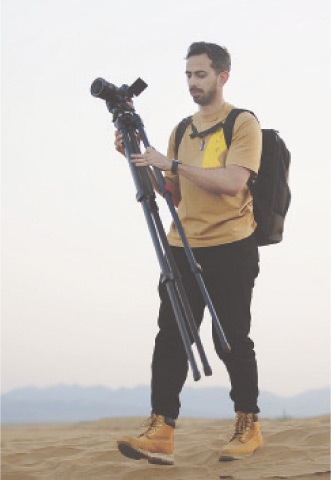A Kingdom Opens Up

Until 2015, advertising in Saudi Arabia was limited to the conventional due to strict media regulations and a mostly conservative society, making it hard for brands to innovate. For example, in Saudi Arabia, Starbucks uses a different logo – the siren’s crown rather than the siren herself, and Ikea removed all visual communication that included women from their 2012 catalogue.
However, since the rule of crown prince Mohammed bin Salman Al Saud, Saudi Arabia has embarked on a mission to diversify the economy and attract foreign investment and along with this, a relaxation of the media regulations. As a result, brands are now able to experiment more freely. According to a LinkedIn article, Rethinking Advertising in Saudi Arabia, by Kinda Hamwi, “while it is still essential to respect KSA’s cultural and religious norms, there’s more flexibility in advertising. Brands can explore creative ways to tailor their ads while still adhering to the country’s values.”
Since then, some of the notable brands to have created innovative content while remaining in tune with the prevailing cultural norms are Rafaello Middle East with their campaign The Love Story (2017) and Nike’s Victory Swim (2021) and Rise of the Kids (2023).
More recently, MG Saudi Arabia released an ad that took advantage of KSA’s revamped advertising landscape and which also managed to break through the mundanity of conventional automotive ads. The 65-second TV commercial depicts how three different, yet passion-filled Saudis – an engineer, a fashion designer and a filmmaker – go about their professional lives with the support of their MG cars.

Produced by The Film House Dubai, the brief, according to Anwar Al Amin, owner and director, was “to show regular people using the car while showcasing progress and development in the country.” He adds that MG did not want a run-of-the-mill car commercial; “they wanted to highlight people rather than their cars, especially given that the current generation is changing rapidly.”
The Film House has been adept in creating innovative ad films for clients in different industries. It was established in 2004 to serve clients in Beirut, Dubai and Saudi Arabia and has worked on brands ranging from Coca-Cola and Pepsi to Audi, Pizza Hut, Unilever and Nestlé. Local brands include Swiss Arabian, Al-Areesh frozen foods, Star Juices and recently, a milk brand for Hayatna.
The Film House differentiate themselves from other production houses because they are “director-driven” and take on a maximum of 14 to 15 projects a year – each film takes a month to develop from initial preps to post-production, and Amin believes that working on two projects in parallel is not fair on the client.
For MG Saudi, The Film House’s big idea was young individuals driven by their passions and how an MG can be their inspiration as well as their companion through their journey. Asked how the ad has done so far, Amin says the results have been better than expected given that the ad’s social media KPIs have been strong. The ad was only released on digital media via Instagram reels and TikTok videos – Amin says the target audience is “the young generation who are passionate about different opportunities, especially now that Saudi Arabia is changing.” The media platform itself shows the vast difference between now and pre-2015 when Saudi Arabia’s ad platforms were TV, newspapers and magazines. Today, according to a 2021 report by Ipsos, KSA has the highest spending on digital advertising in the Middle East and North Africa – around $950 million.
If Saudi Arabia’s advertising market is evolving, certain challenges remain. For example, Amin says that it was hard to find a Saudi female who could both act and drive. “Many women can drive since KSA changed its policy in 2019, but the majority have still not got their driving license.”
Amin also emphasises that there is much to explore in KSA in terms of advertising. He cites the example of Neom, the new smart city which is attracting foreign filmmakers and production houses. In the past, when it came to filming, Dubai and Beirut were the locations of choice. Amin clearly feels upbeat about the potential prospects in Saudi Arabia. “KSA has a huge population made up mostly of youngsters. The number of digital influencers is rapidly increasing, so the future is promising. Any brand can come here and progress because there are so many different cities, languages and foods… advertisers can indulge in ample innovation.”



Comments (0) Closed